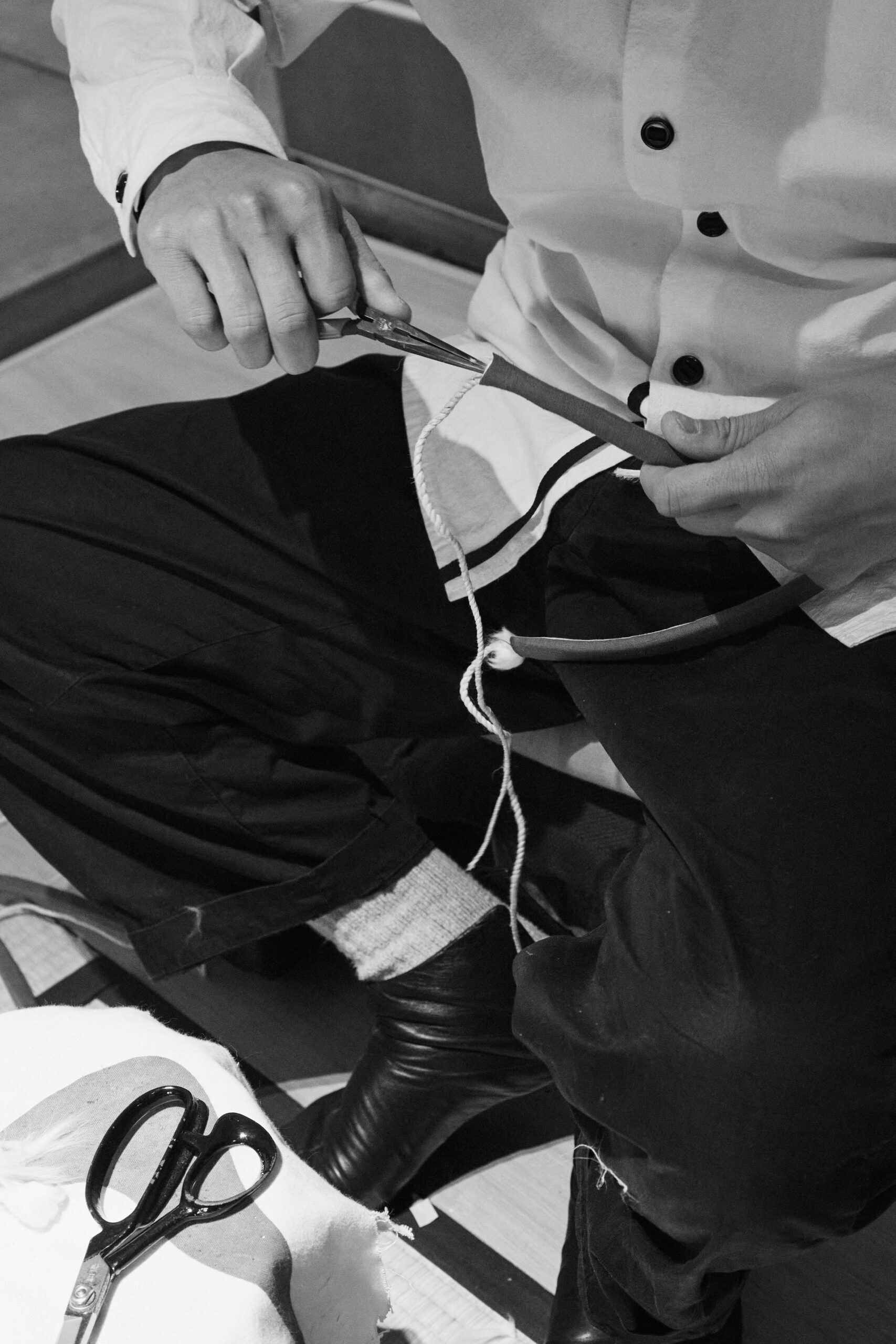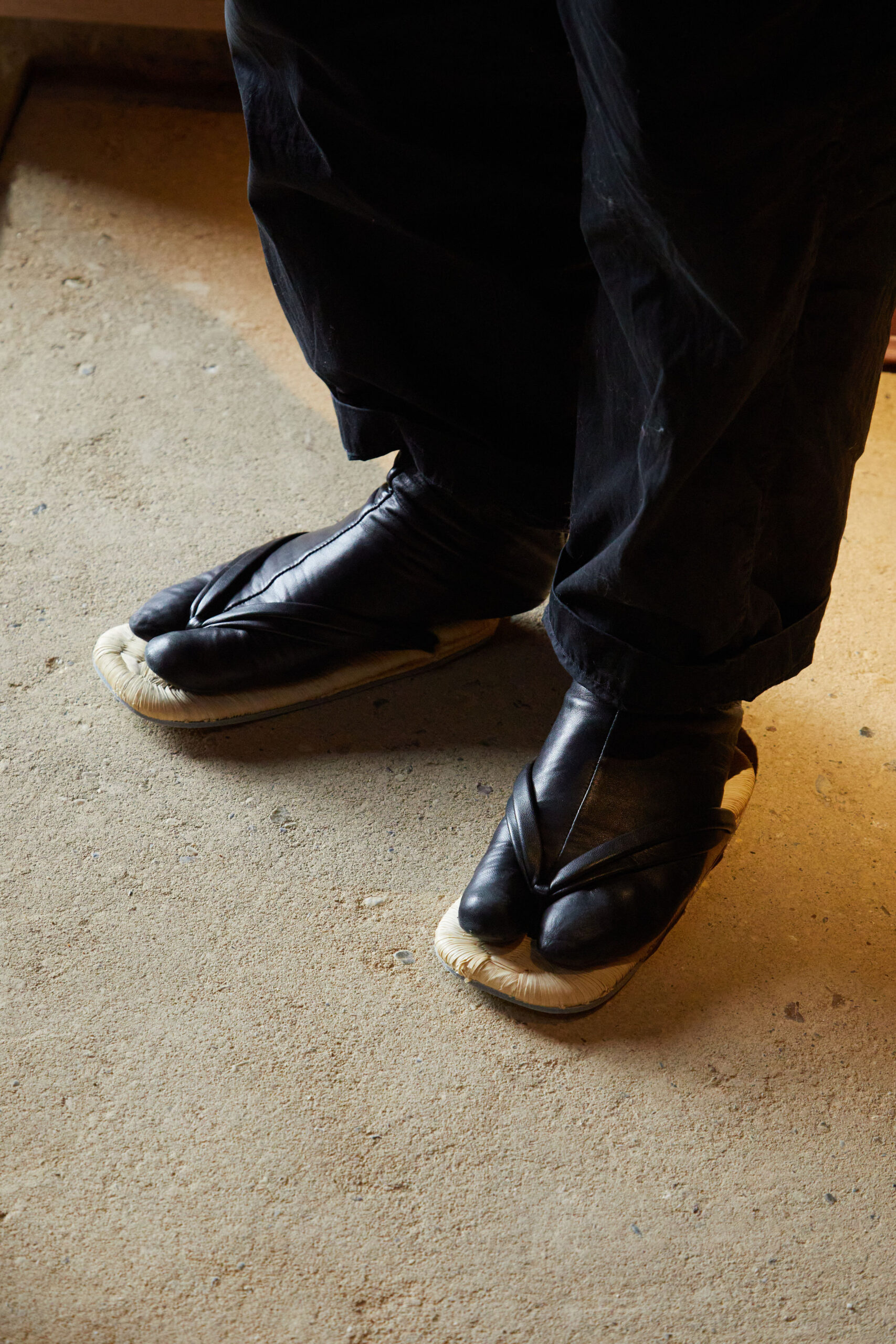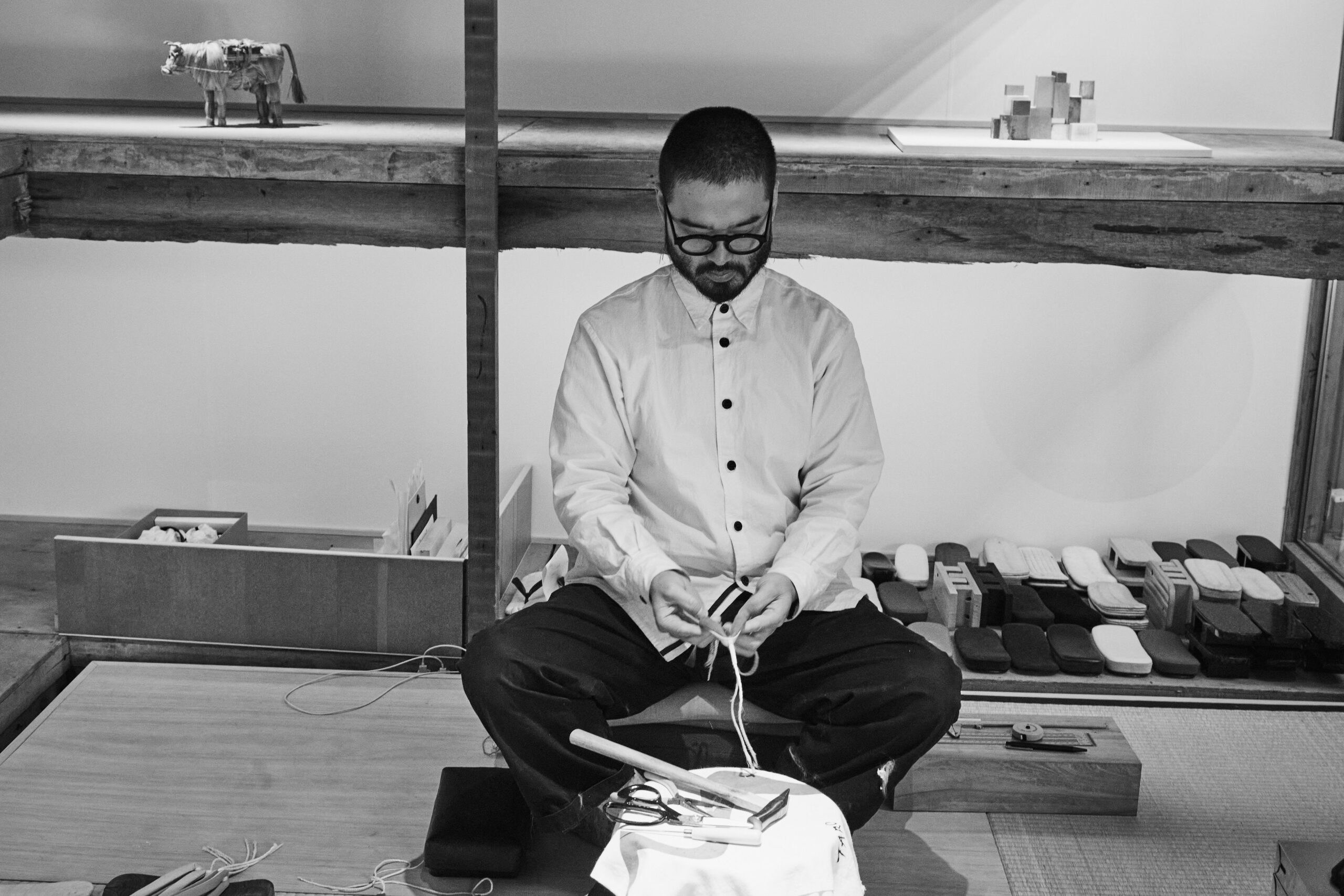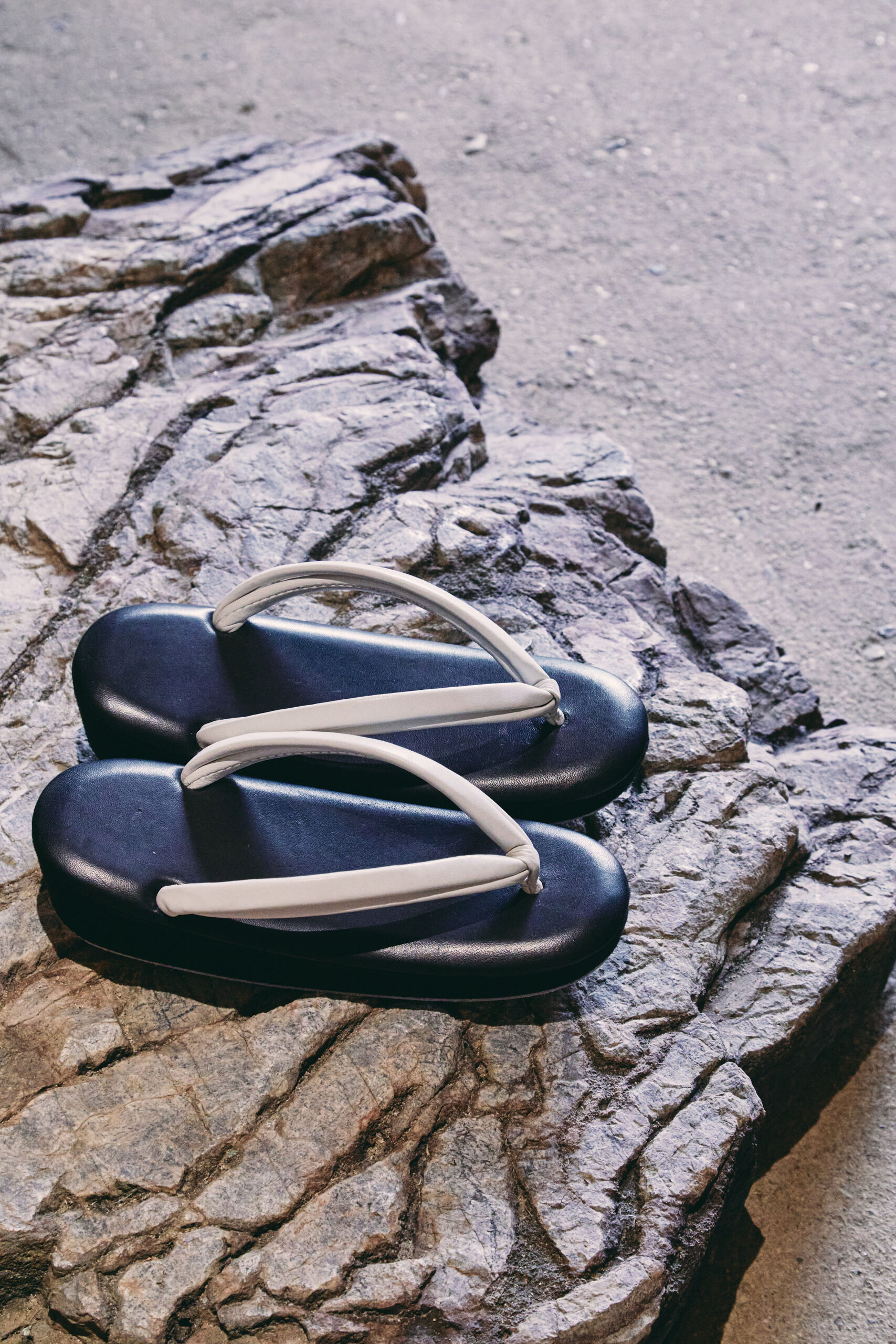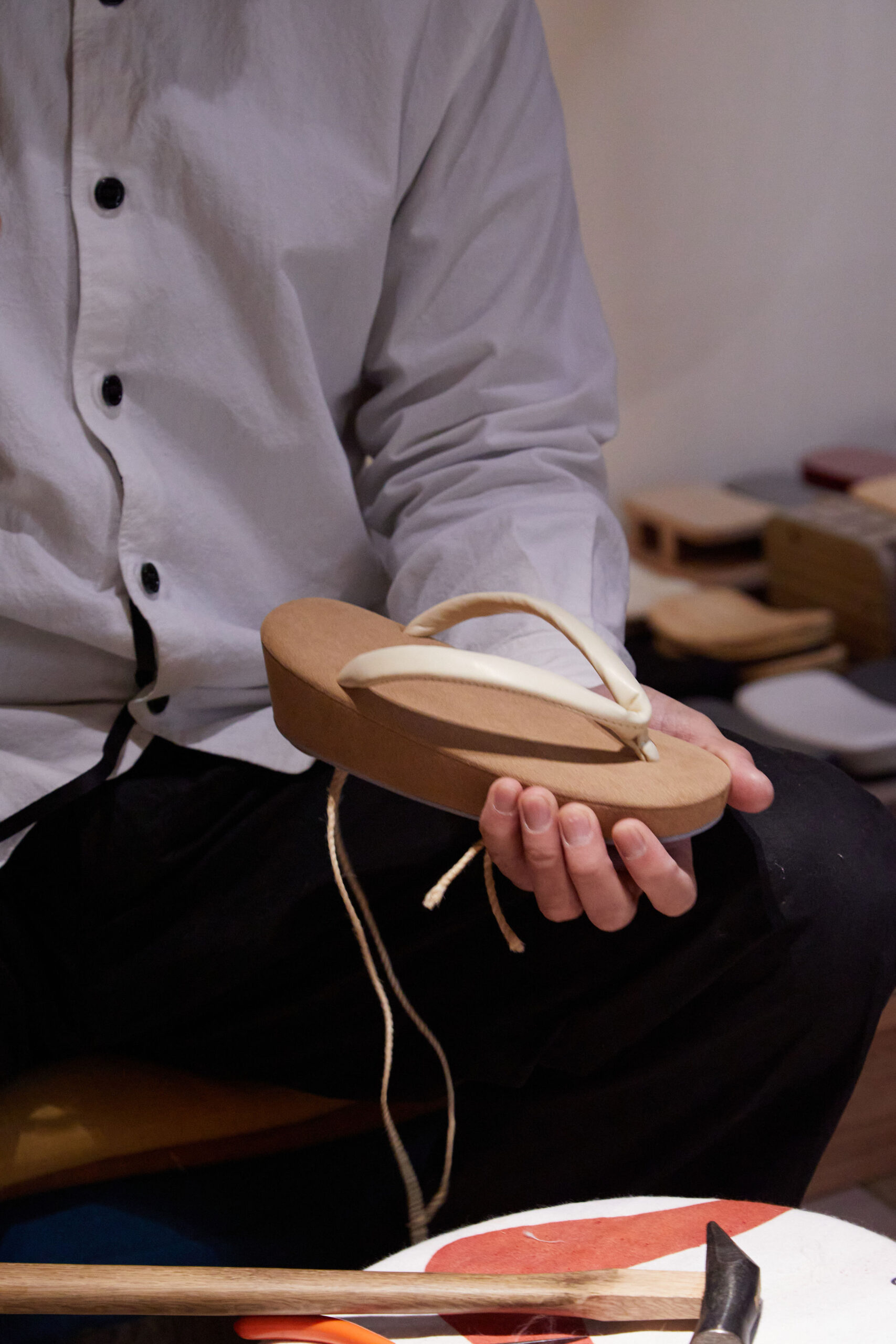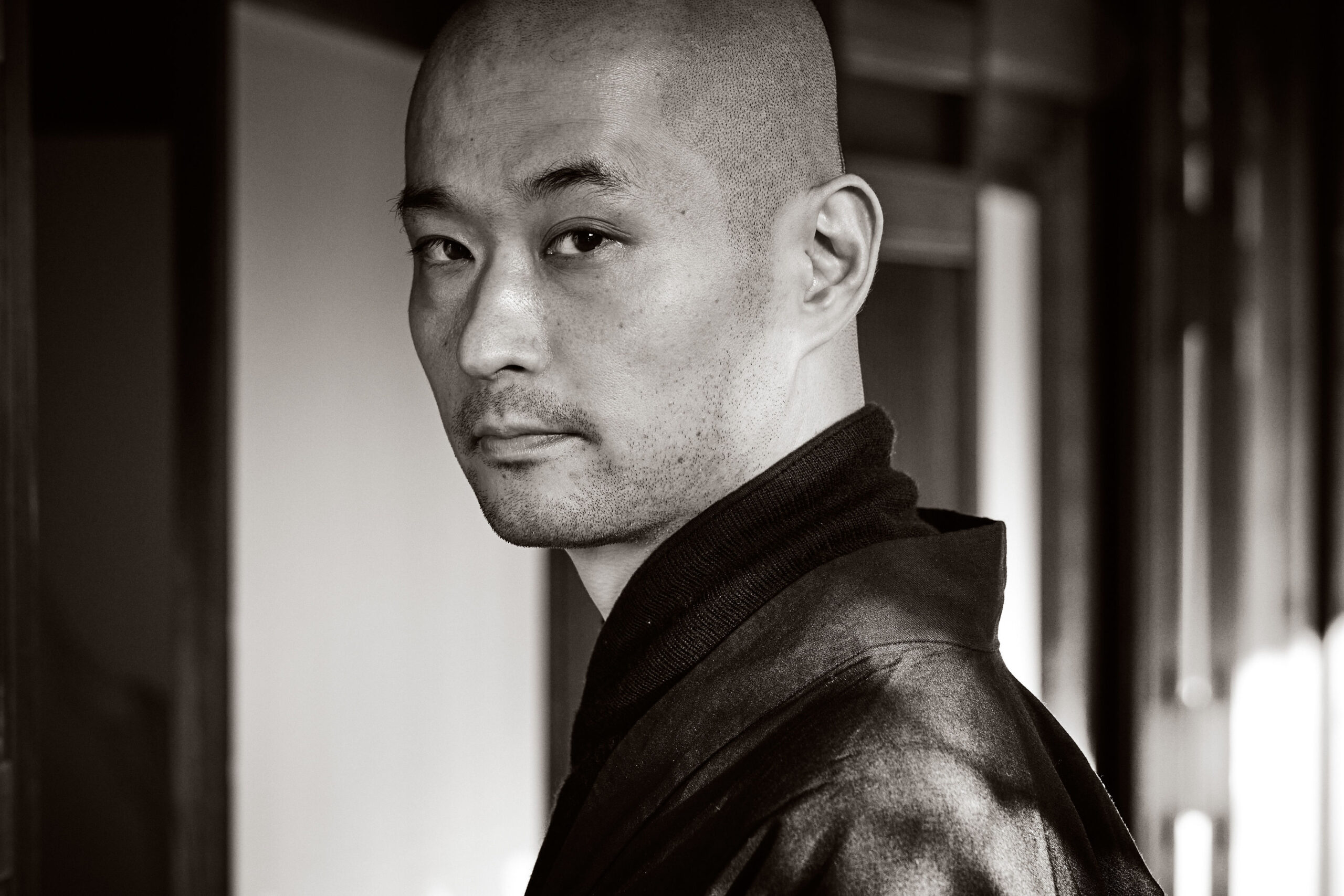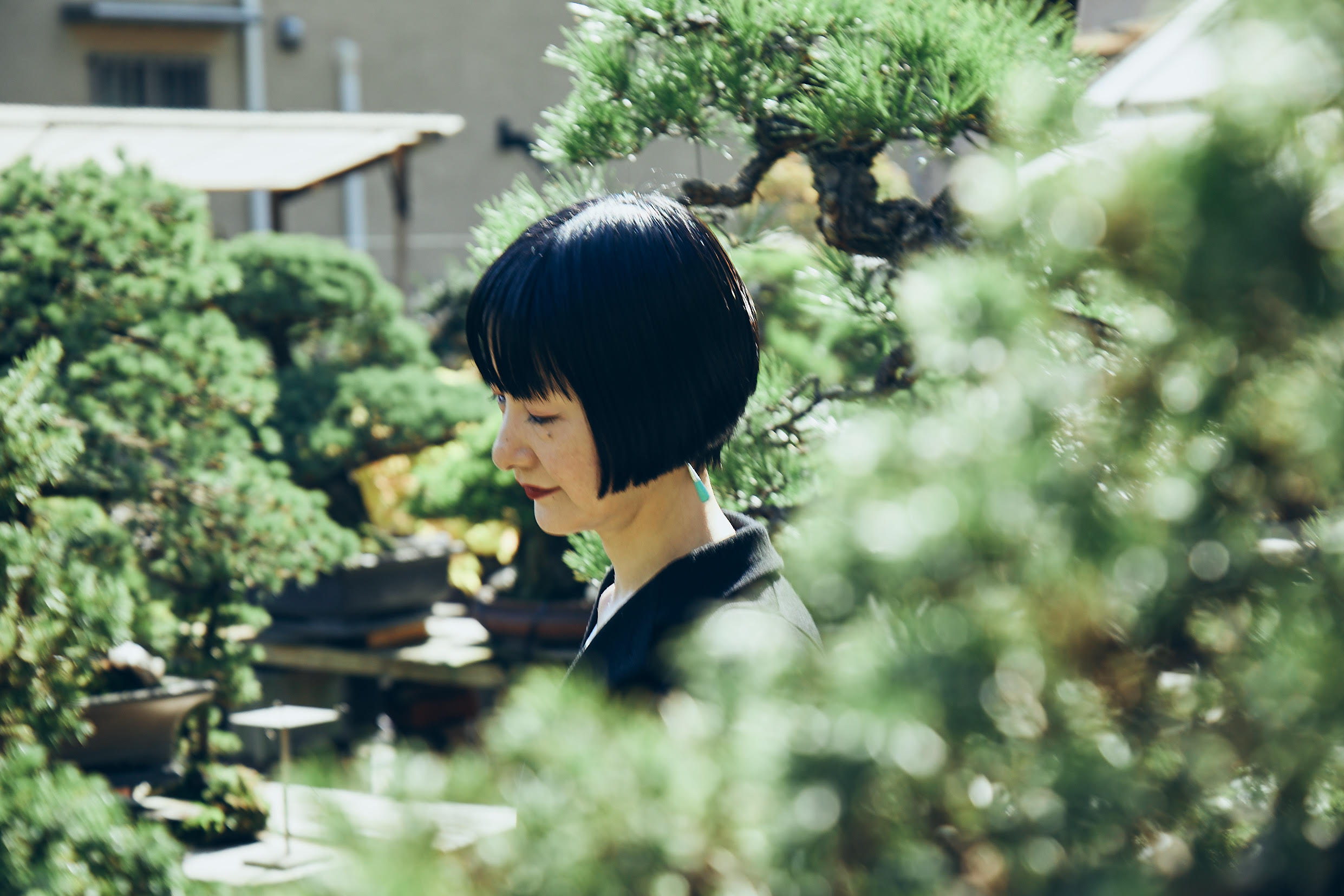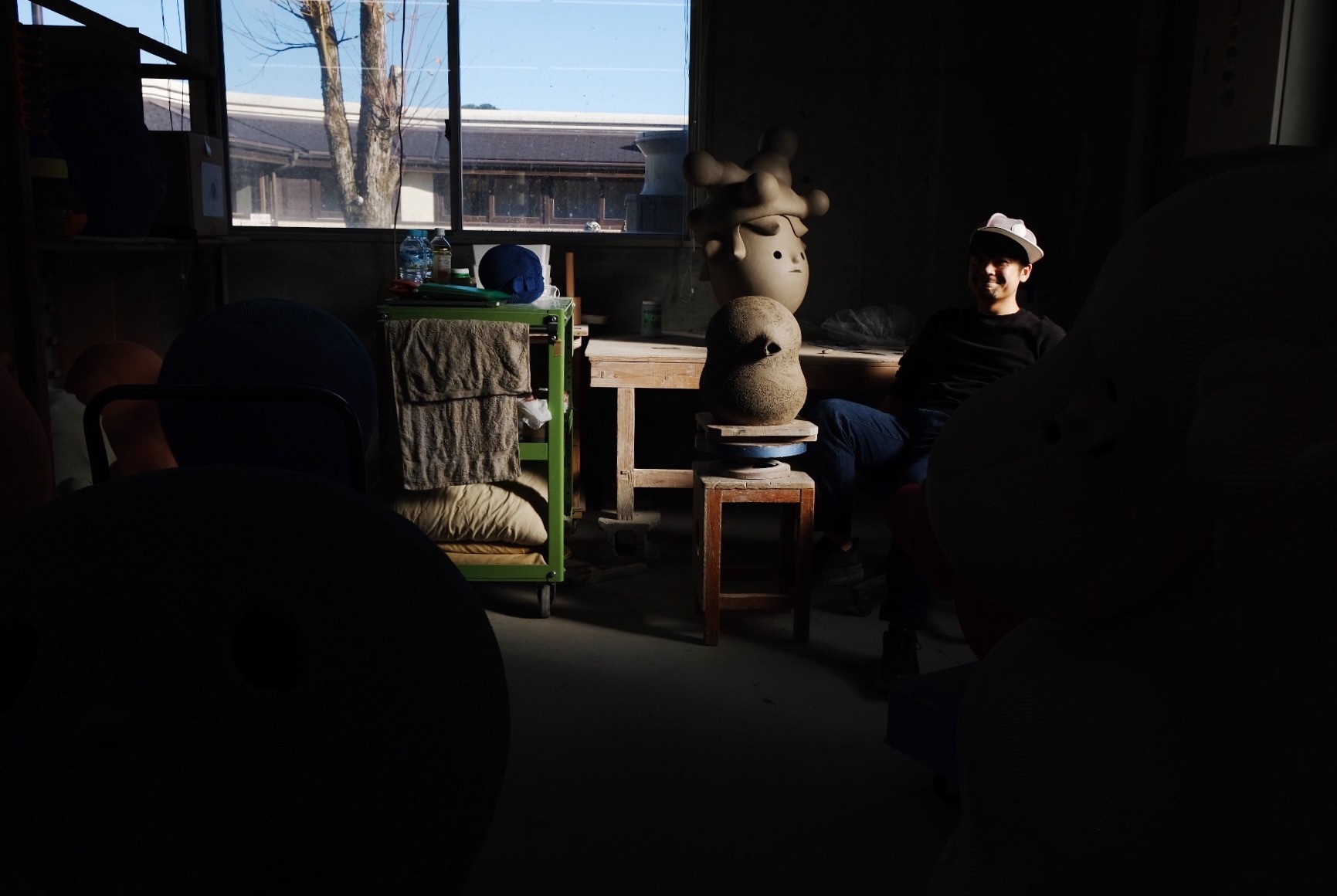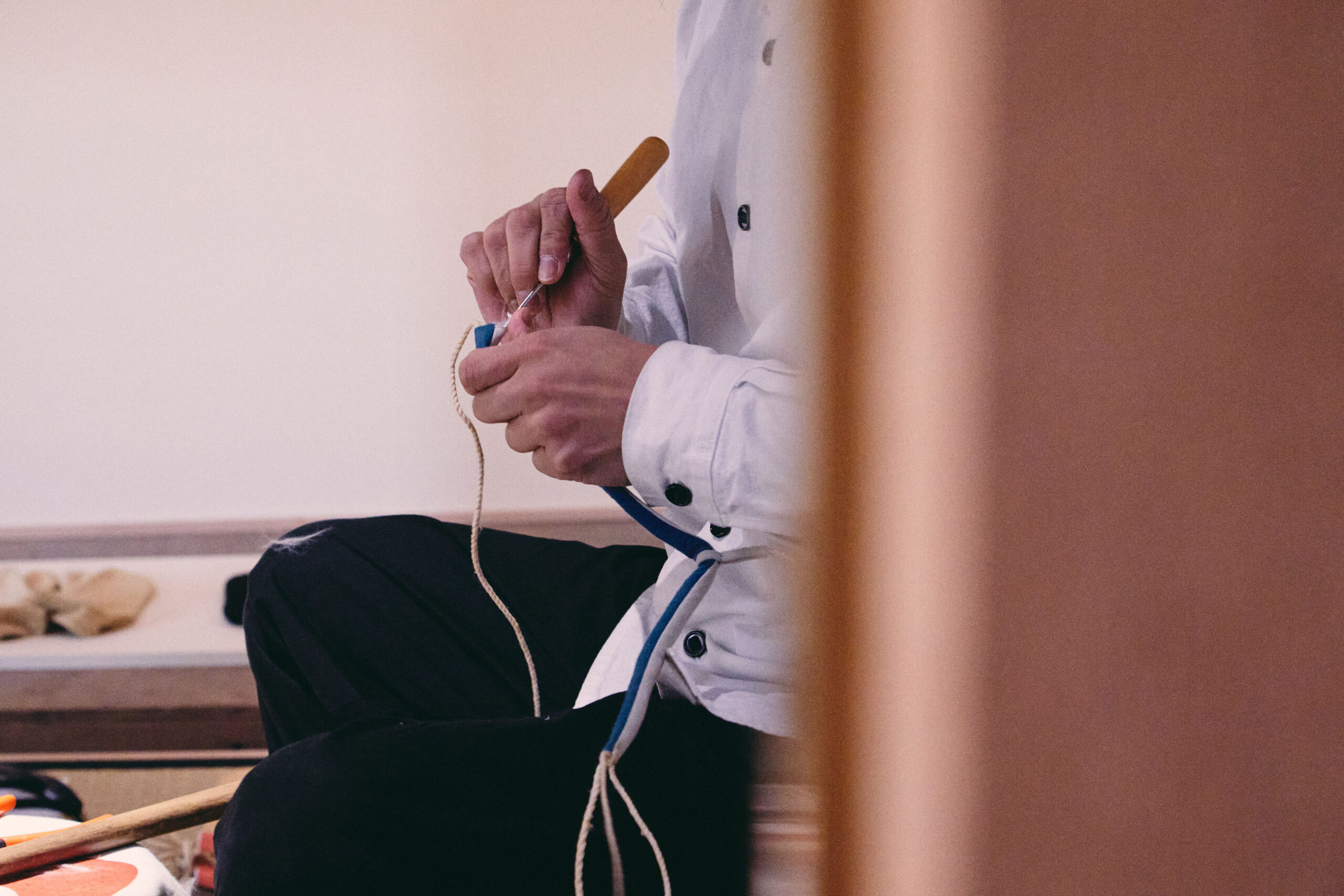

Faces
Shinji Sekizuka-Hakimono ‘Hybrid’ Craftsman
KYOTO
Meet Shinji Sekizuka-san, a craftsman (or a “hybrid craftsman”, as he likes to call himself) who creates beautiful Japanese hakimono. While hakimono is an umbrella term that covers all footwear, Shinji is currently focused on creating traditional Japanese sandals called zori. Though his workshop and gallery space is located away from the hustle and bustle of the central city, it is still visited by many customers out to purchase their very own special, custom-made zori. Curated Kyoto talks to Shinji to find out what inspires him, why he delved into the world of hakimono, and why he has made it his mission for zori to be worn as everyday footwear both in Japan and abroad.
Words by: Sara Aiko (SA)
Creative Direction by Sara Aiko
Photos by: Kingy
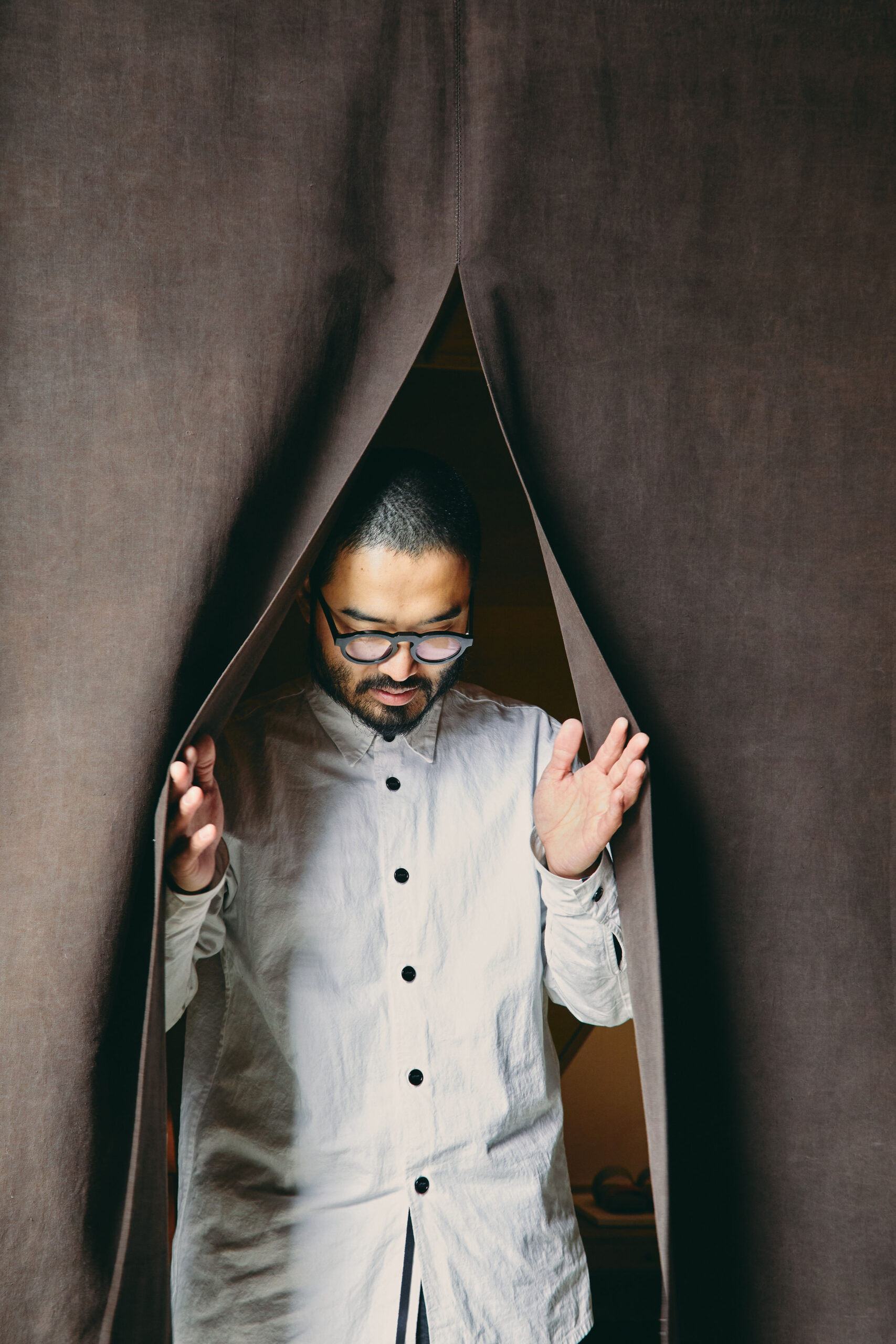
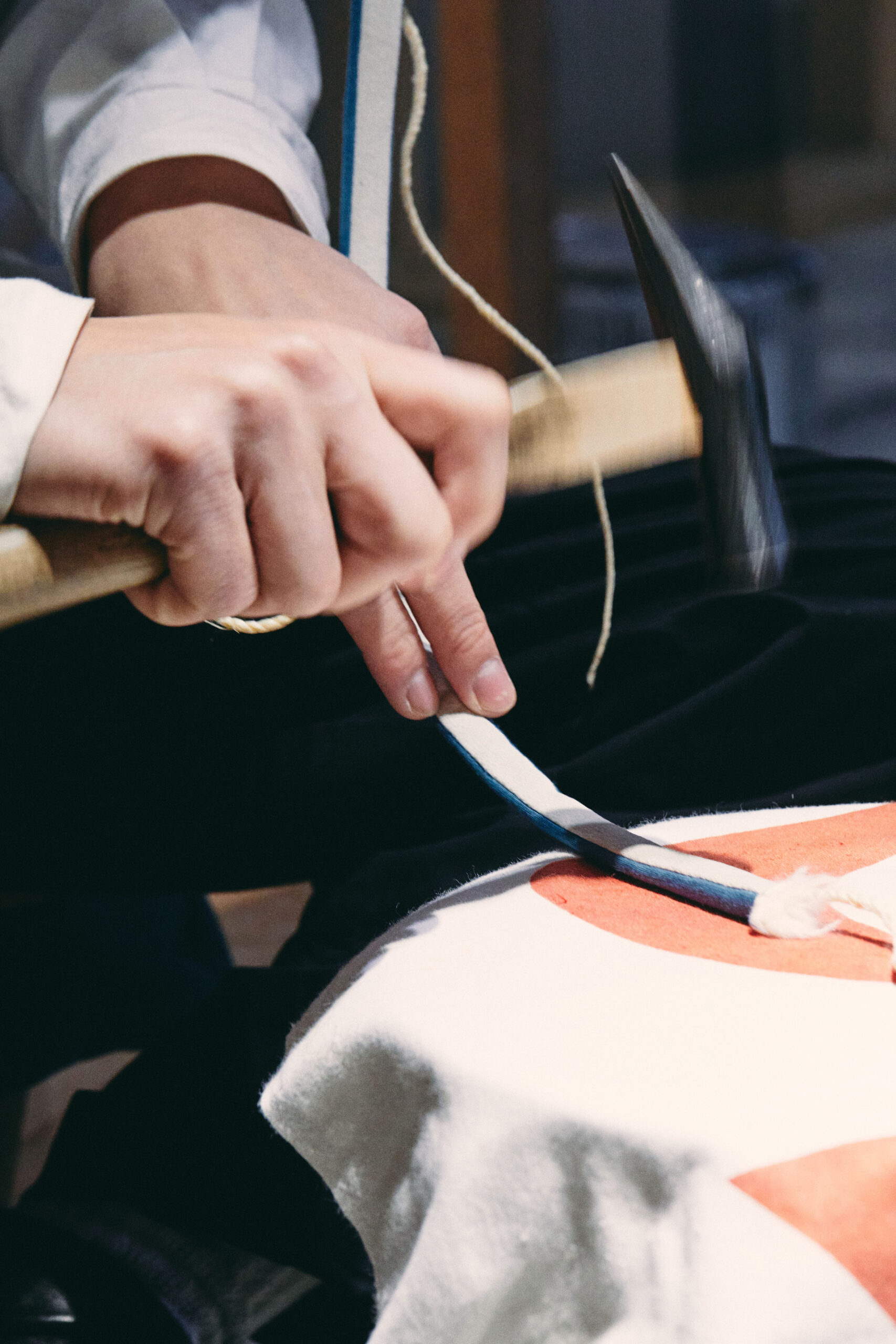
Could you please introduce yourself and what you do?
SS: My name is Shinji Sekizuka. I’m a hakimono craftsman. However, I come from a new school of “hybrid craftsmen”, where I design, create, and also sell my work. I do it all by myself.
SA: What are hakimono?
SS: If you break down the word “hakimono” you get “haku” (to wear), and “mono” (things), so it translates simply to “footwear”. So basically, zori sandals are classified as hakimono, Western shoes can be hakimono, and even socks can be hakimono. I say to people that I make hakimono because eventually I want to start making shoes as well, not just zori sandals.
SA: Do you manage everything yourself because you want to have control of the quality?
SS: Yes. There is something really satisfying about getting to choose the material and confirm the quality of the material with my own eyes before creating a product out of it. Also, it means I can offer my customers honest and high-quality finished pieces.
SA: Isn’t it pretty rare for a hakimono craftsman to do that?
SS: Yes, I think so. I think I’m the only hakimono craftsman who actually goes out to choose the material for the shoes. For example, I will go to the tannery and pick out the leather personally, or I will go out and find just the right textiles. I choose everything.
SA: When and why did you decide to get involved with this trade?
SS: Originally, I used to work in sales and was in charge of the wholesale for a French shoe brand. I think I started there when I was nineteen… I didn’t go to university. Through that I got introduced to the world of hakimono and zori. When I came across them I was really amazed. I was like, “wow, this is stunning.” I always loved leather and fashionable shoes, but the first time I came across hakimono, when I was around twenty-two, I was really hit by a jolt of inspiration. I wanted to somehow get into that world and design my own.
SA: You didn’t really have any experience designing Japanese footwear before that?
SS: No, I didn’t! My first thought was that it looked pretty easy to make since it was such a simple design. My second thought was wondering how something so simple could be so beautiful.
SA: So how did you make that into reality?
SS: Well, from there I worked at a well-known Kyoto hakimono shop. I really did my research to find the shop that was creating the most beautiful products, and I felt that that shop made the ones with the best color combinations. I worked there for ten years. Five years into working there, I decided that I would continue working there for five more. I felt that I had to at least be there for ten years, otherwise I wouldn’t really learn the foundation of the craft.
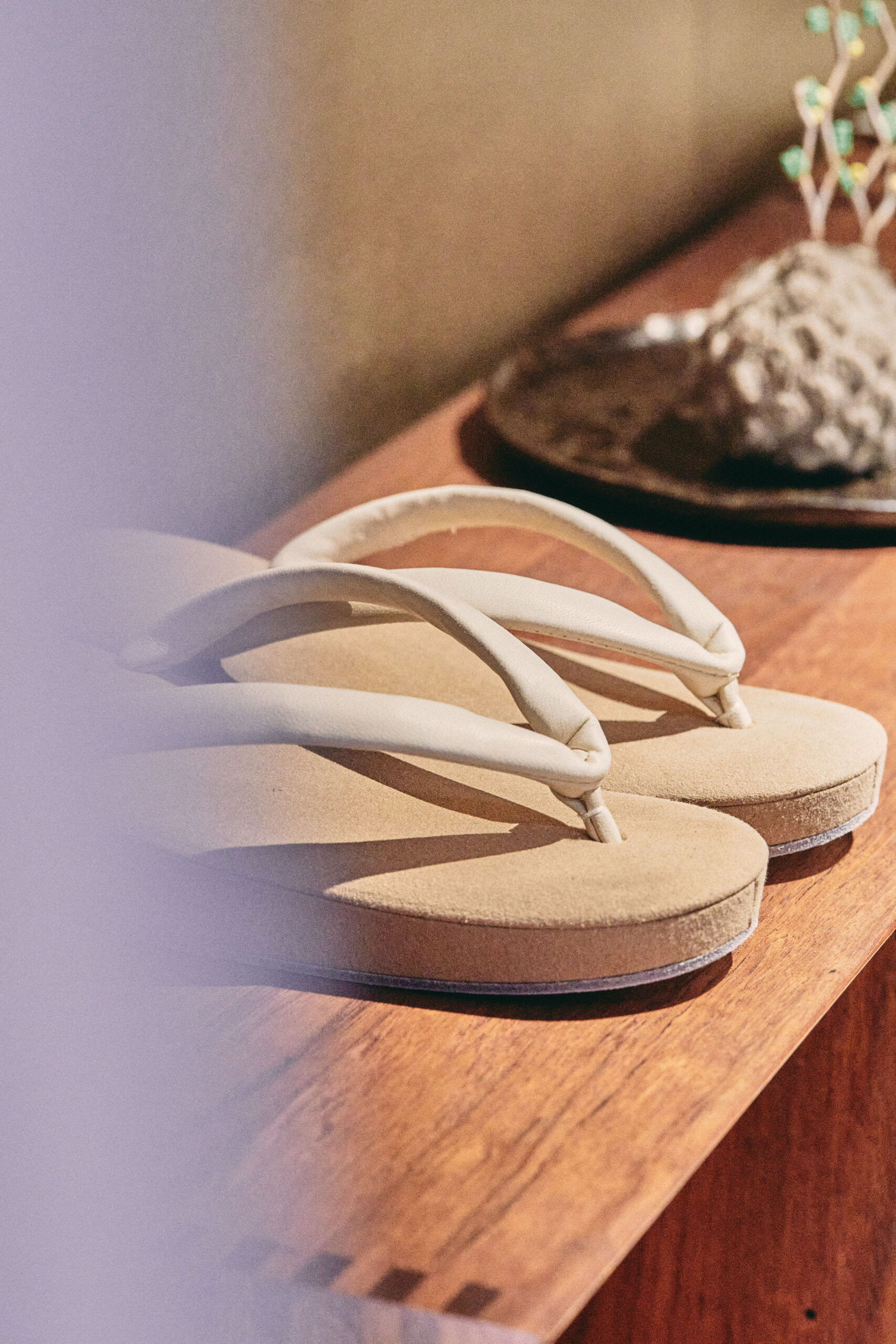
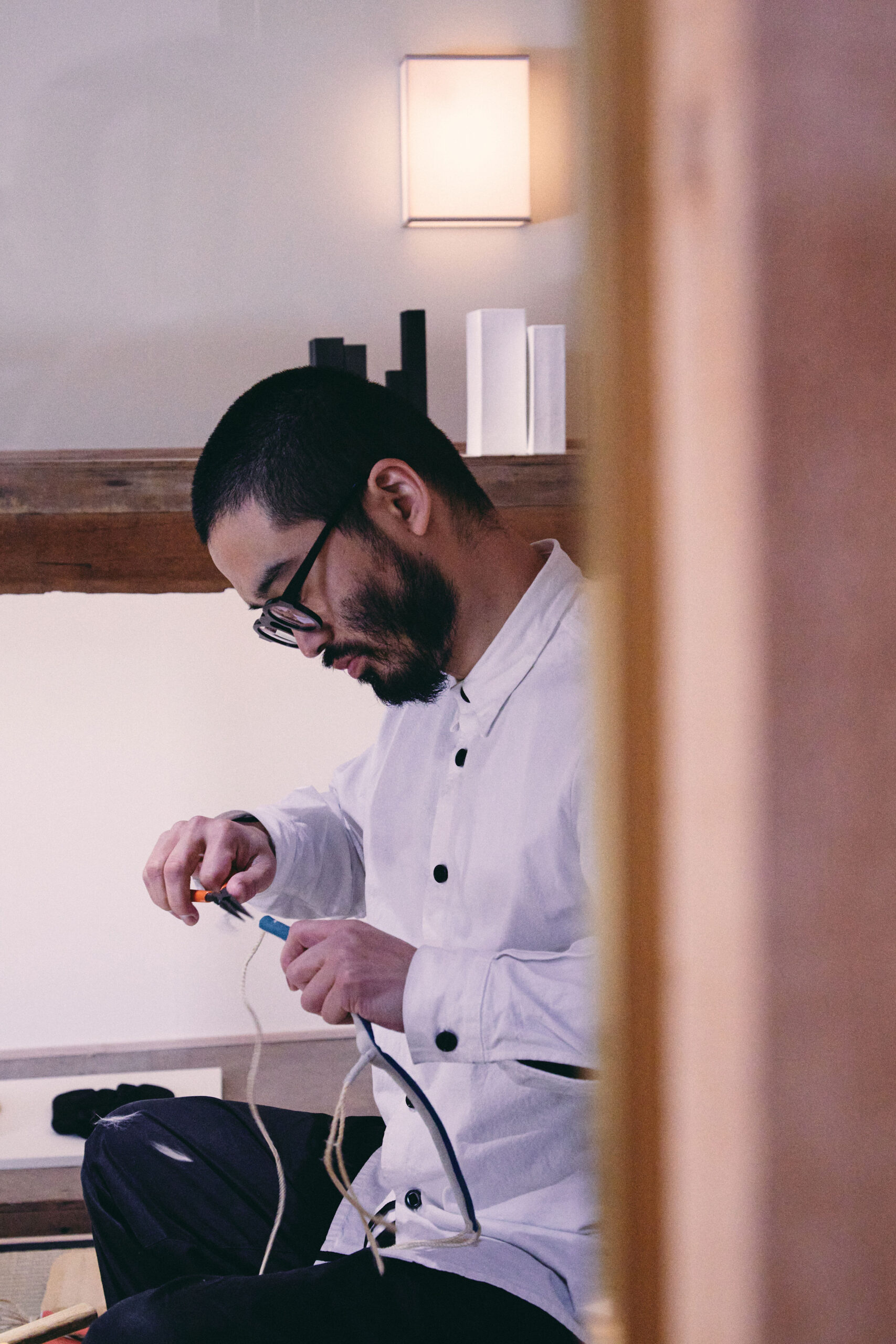
SA: At five years into working at this hakimono shop were you able to create the footwear without any problems?
SS: I was actually able to make them in the second week of starting, [laughs]. They’re pretty easy to make, but when it comes to improving and truly mastering the craft… I am still learning to this day. I know I will keep on getting better and better.
SA: In what area are you looking to improve now? Is it technique? Getting more experimental with the materials you
use?
SS: I’m working on my posture, actually. Really being more conscious with the movement and how I hold my body. Just the slightest change there will produce different results. It’s like trial and error, trying out different movements. I remember hearing a long time ago that “anyone could become as good a baseball player as Ichiro if they knew how to control their body 100%.” I think that’s exactly right. That’s why I’m really looking into controlling and tweaking how I move my body.
SA: Tell us about your brand. What is the concept?
SS: The concept of the brand is “Japanese hakimono which aren’t shoes”. People might think that I mean zori when I say that, but I don’t fit into just one box. I don’t create shoes which are completely Japanese, nor do I create shoes which are completely Western.
SA: What are you doing to make your concept understood?
SS: To achieve that goal, I’m constantly using the term “hakimono” and talking about them on social media. The reason I have this gallery here is so that people have the opportunity to touch and see them for themselves. The gallery is connected to my hakimono workshop, because I feel that if it were just the workshop people might be a little intimidated and not visit.
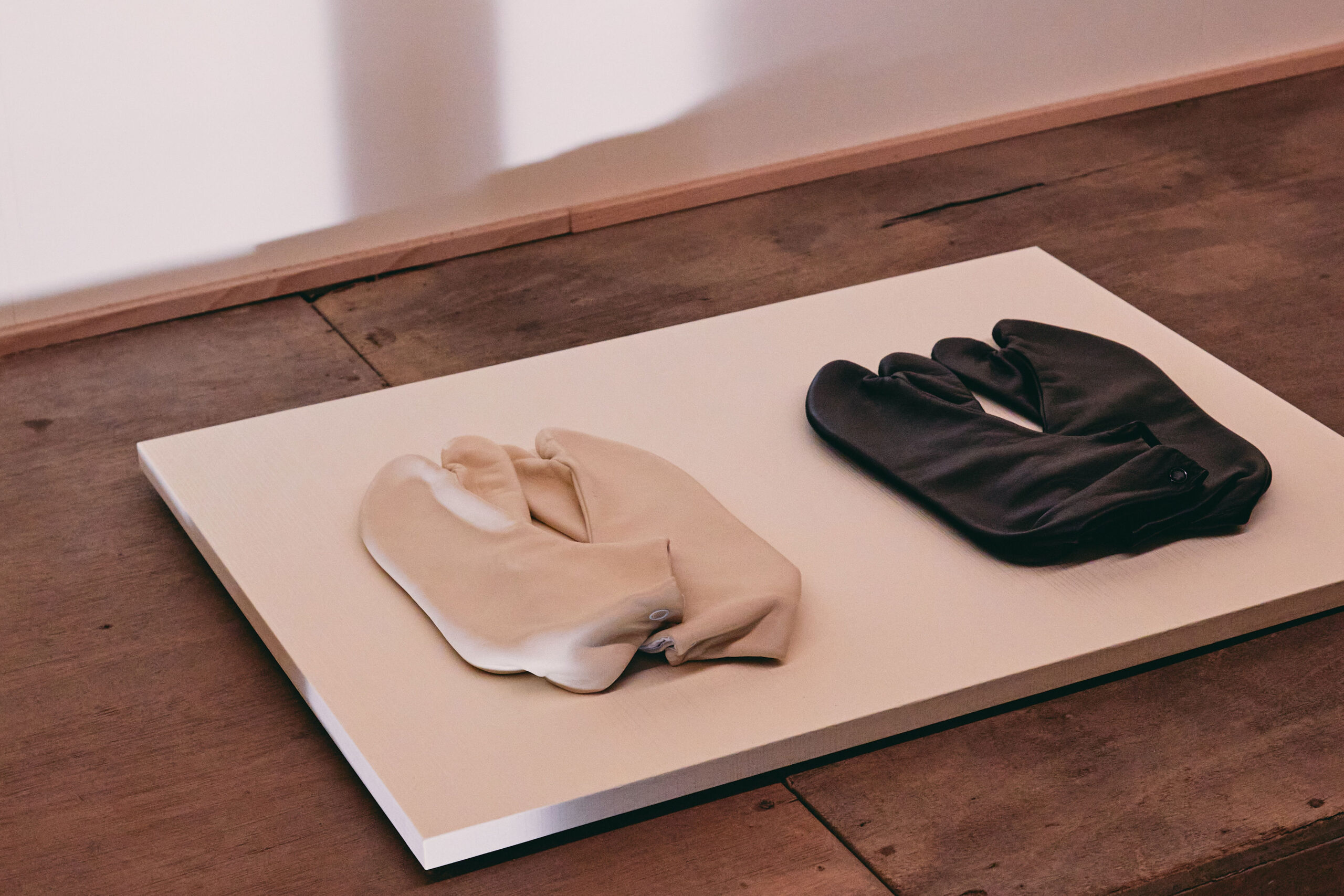
SA: Before, you talked a little bit about the materials and textiles you use. Could you tell me more about it?
SS: I use a lot of leather. Linen and cotton, as well… When it comes to the materials I use, really there are no rules, it can be anything. Like right now, I’m looking at a piece of Gore-Tex clothing and seeing if I could cut it to make into zori. I even cut up pieces of vintage clothing to see if I can make those into zori as well.
SA: So, you pretty much experiment with anything and everything?
SS: I do! I don’t put any restrictions on what I try. If I did that, really, there would be no future for me. There is no creativity. I’m not like, “I only use the finest silk!” That becomes boring.
SA: You have collaborated with a few brands. Why do you collaborate with them?
SS: To tell stories and to reach a larger audience. I collaborate with people whom I know I can trust, who can help the story and message of hakimono reach a larger audience.
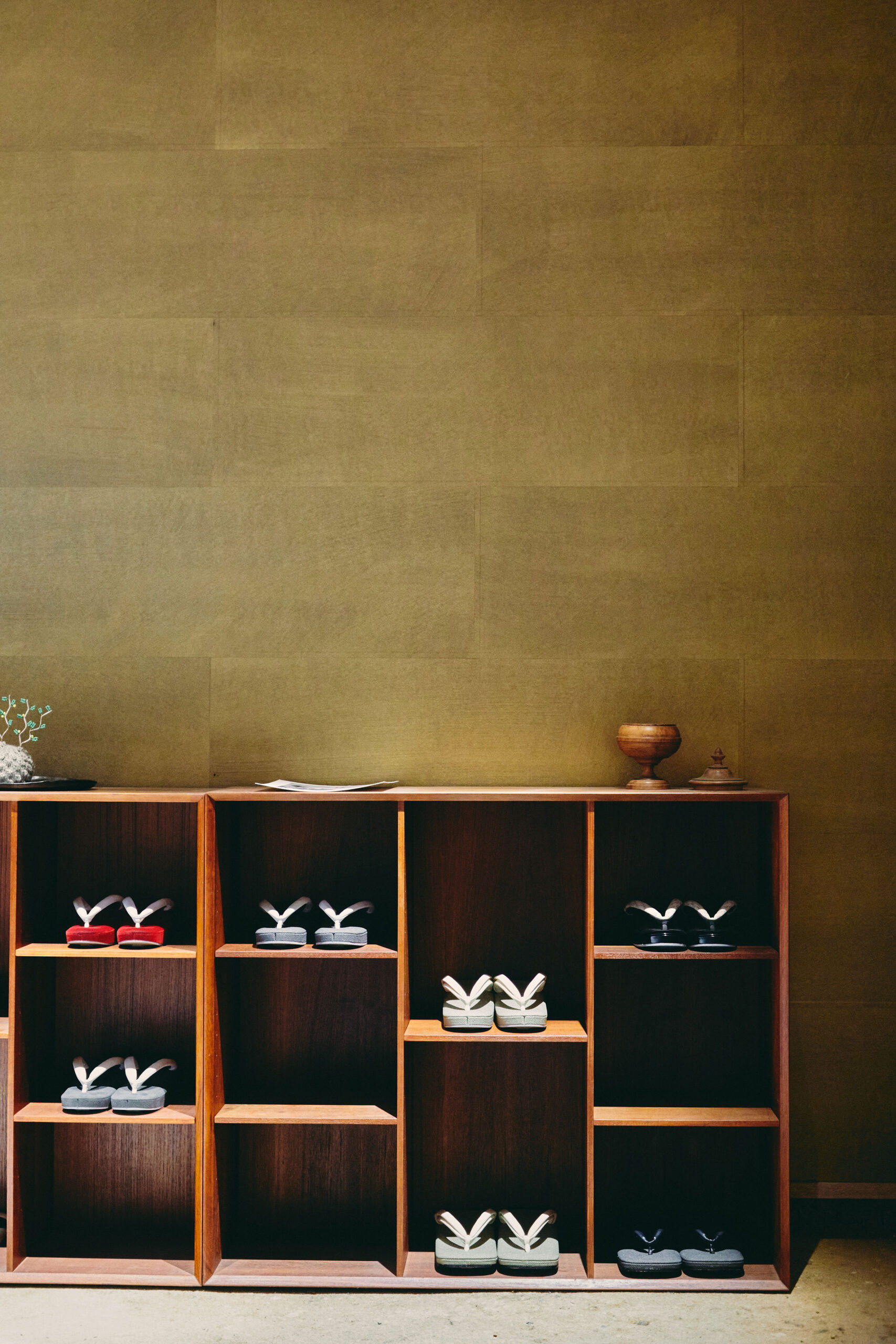
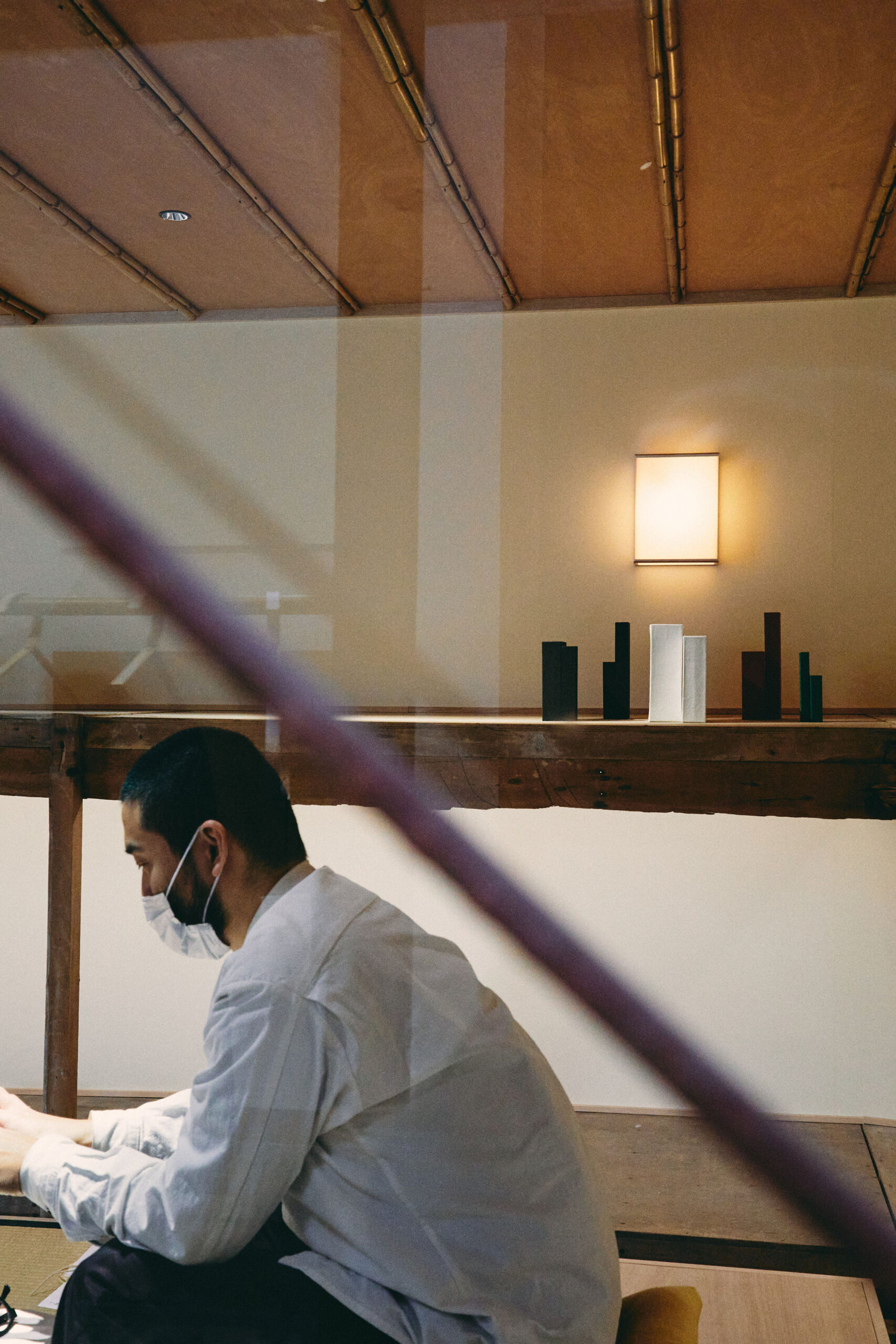
SA: Where do you get your inspiration from?
SS: Well, I’m creating something very simple, so I’m always looking for things to inspire the colorway or different combinations. Usually, the inspiration comes from looking at old Japanese paper or textiles. I also take a lot of inspiration from the countryside. I grew up there, so walking around the river or the area near my workshop always provides some sort of inspiration.
SA: Do you wear your own zori?
SS: Yeah, of course! Even if I’m just going out to the supermarket, I will wear zori. They make up over half the footwear I own.
SA: What is your goal for your business?
SS: I want these zori to be a part of people’s everyday life, not just for special occasions. For example, if someone is going out shoe shopping, I want them to have “zori” on their shopping list just like they would put “sneakers” on there. I want them to be a new option for everyday footwear. I would die happy if that day comes, [laughs].
AA SEKIZUKA: https://hakimonosekizuka.com/collections/履物関づかが提案する誂
